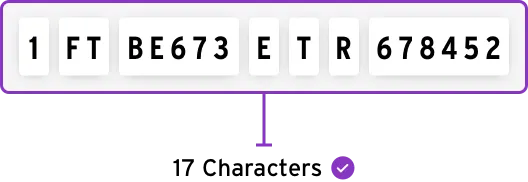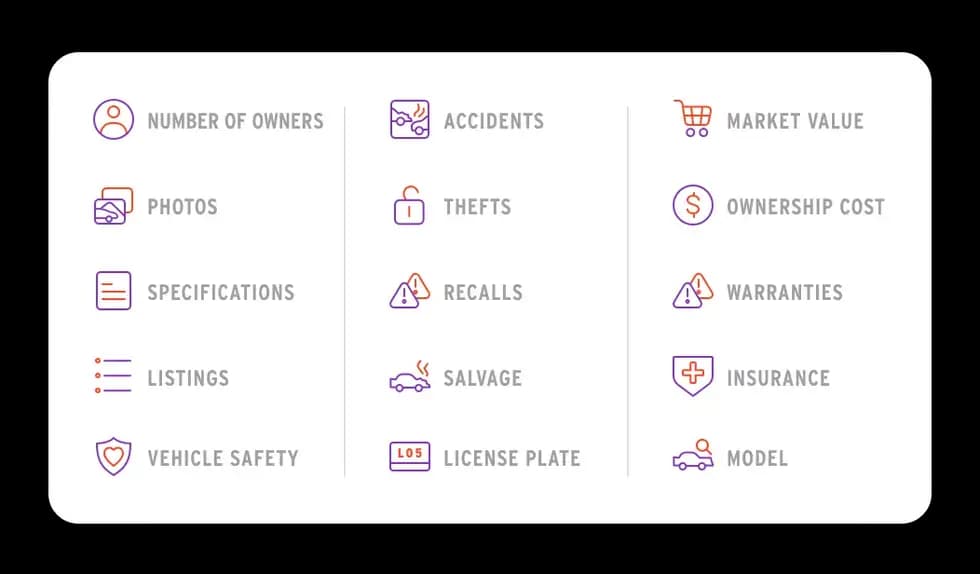- VIN Characters 1-3 are the World Manufacturer Identifier portions of a VIN. They reveal the manufacturer’s geographic region, country of origin and the manufacturer.
- VIN Characters 4-8 are the Vehicle Descriptor Section of a VIN. These characters correspond to components like the engine type, transmission, model, body style and gross vehicle weight range. Auto manufacturers have some discretion to decide how they want to code this section, but its contents and decoded results are generally consistent.
- VIN Character 9 is the “check digit.” Based on a formula developed by the US Department of Transportation, it helps reduce fraud by ensuring the validity of the VIN.
- VIN Character 10 is the model year. It can either be numerical (1-9) or an alphabet character (excluding I, O, U, Q and Z). This can be decoded by referencing the below table:
Instant VIN Check
Get the full history of any car in seconds, including odo history, accident history and more.
How to check and decode a VIN number
VIN numbers for US vehicles manufactured after 1981 can be read in the following format:

How many numbers are in a VIN?
Modern VINs contain 17 characters. Vehicle Identification Numbers have existed since the early 1950s, but there was no standardized format until 1981. That’s when the National Highway Safety Administration introduced the current format, requiring all vehicles driven on public roads to have a 17-character VIN.
When you want to decode a VIN, remember that modern VIN numbers do not use the letters O, I or Q in order to avoid confusion with the numbers 0, 1 and 9. Carmakers have been required to make the VIN visible from outside the car via a stamped metal plate on the dashboard since 1968, which makes it easy to do a VIN lookup. Prior to that, the VIN could be found stamped onto the frame or even the engine of a vehicle.
How do you decode engine size and transmission from a VIN?
A vehicle’s engine and transmission info can be found in the VDS section (characters 4-8) of a VIN. Our VIN decoder can confirm a lot of this information for free, which can help you find out whether a vehicle has an automatic or manual transmission, its engine displacement and arrangement, and whether it’s all-wheel drive (AWD), front wheel drive (FWD), or rear wheel drive (RWD).
Auto manufacturers have some freedom in how they code the VDS portion of a VIN number, meaning there’s no standard for engine or transmission codes in the sequence of a VIN across every make and model.


How to get vehicle history & specs with a VIN
A vehicle’s VIN is the key to unlocking data and information about a vehicle’s specs and history. Anyone who owns a car or is in the market to buy or sell one can use Carhub to decode a VIN for free.
From there, our full vehicle history reports can provide available accident and owner history, sales listings, theft info, among dozens of other data points like applicable recalls, market value, and title status issues.